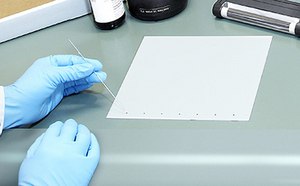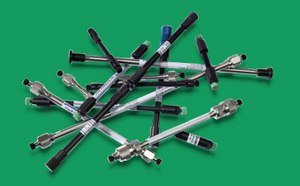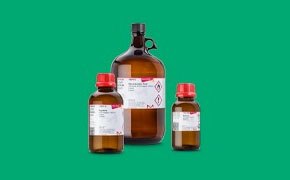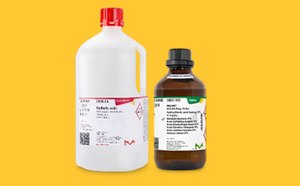Thin Layer Chromatography
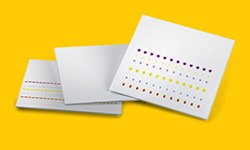
Thin layer chromatography (TLC) is an affinity-based method used to separate compounds in a mixture. TLC is a highly versatile separation method that is widely used for both qualitative and quantitative sample analysis. TLC can be used to analyze virtually any substance class, including pesticides, steroids, alkaloids, lipids, nucleotides, glycosides, carbohydrates, and fatty acids.
Featured Categories
Choose from classical TLC plates with silica, aluminum, glass, and plastic backings as well as HPTLC plates, MS-Grade TLC and HPTLC plates, and PLC plates.
Achieve precise separations with our extensive HPLC column collection. Enhance retention, resolution, and selectivity. Order today.
Your Solvent Source: Find the right fit with Supelco®, SigmaAldrich®, & SAFC® brands, covering analytical, lab, & biopharmaceutical uses. Order online.
Uncover a wide acid range: Supelco® for analysis, Sigma-Aldrich® for labs, SAFC® for biopharma. Tailor solutions for varied needs.
In TLC, the stationary phase is a thin adsorbent material layer, usually silica gel or aluminum oxide, coated onto an inert plate surface, typically glass, plastic, or aluminum. The sample is spotted onto one end of the TLC plate and placed vertically into a closed chamber with an organic solvent (mobile phase). The mobile phase travels up the plate by capillary forces and sample components migrate varying distances based on their differential affinities for the stationary and mobile phases. When the solvent reaches the top of the plate, the plate is removed from the developing chamber and dried. The separated components appear as spots on the plate and the retention factor (Rf) of each component is assessed.
TLC Process and Principles
TLC is based on the classic chromatography principle where mixture components are separated between a fixed stationary phase and a liquid mobile phase by differential affinities between the two phases.
TLC Retention Factor (Rf)
The retention factor (Rf) is used to measure the movement of compounds along the TLC plate. Rf is defined as the distance travelled by an individual component divided by the total distance travelled by the solvent. Its value is always between zero and one.
| Rf = | distance traveled by component |
| distance traveled by solvent |
In general, the stronger a compound binds to the stationary phase adsorbent, the slower it migrates up the TLC plate. As TLC adsorbents are typically polar, non-polar compounds tend to travel more rapidly up the plate, resulting in a higher Rf values, whereas polar compounds tend to move slowly and have lower Rf values.
Applications of TLC
TLC is widely used by many industries and research fields, including pharmaceuticals, clinical testing, environmental toxicology, food, water and pesticide analysis, and cosmetics. Typical applications of TLC include:
- Analysis of drug residues and antibiotics in food and environmental samples
- Identification and quantification of colors, ingredients, preservatives, and sweetening agents in food and cosmetic products
- Quality control and purity testing of pharmaceutical formulations
- Rapid, high-throughput screening prior to HPLC
- Examination of chemical reactions for completion
Visit our document search for data sheets, certificates and technical documentation.
Related Articles
- In this article we present several HPTLC applications and analytical standards for ginsenosides.
- Discover the history of thin-layer chromatography (TLC) and its key milestones that have shaped analytical chemistry over the past century.
- HPTLC-MS was used to analyze stevioside and rebaudioside in artificial sweeteners, stevia plants, cola and isotonic drinks with a minimum of sample preparation.
- Thin layer chromatography (TLC), an analytical technique often used to separate and identify compounds present in a given mixture, can also be used to determine the purity of a particular substance within that mixture
- TLC plates, with silica gel, gypsum as binder, International Pharmacopoeia compliant, for identification of Atenolol and Chlorthalidone in tablets.
- See All (16)
Related Protocols
- TLC separation relies on capillary forces to transport substances on a stationary phase after mobile phase transport.
- Powdered black pepper tested for pierine content follows USP guidelines using HPTLC and HPLC for dietary supplements.
- HPTLC was used to analyze caffeine in coffee. Filtration of coffee through a PTFE syringe filter was the only sample preparation. Quantitation was conducted with a TLC scanner.
- Silica gel G 254 plates are suitable for analysis of Dextromethorphan following the European pharmacopeia monograph.
- The modern thin-layer chromatography (TLC) offers advantages also in the field of cosmetics to quickly and simultaneously analyze samples with densitometric detection.
- See All (13)
Find More Articles and Protocols
How Can We Help
In case of any questions, please submit a customer support request
or talk to our customer service team:
Email custserv@sial.com
or call +1 (800) 244-1173
Additional Support
- Chromatogram Search
Use the Chromatogram Search to identify unknown compounds in your sample.
- Calculators & Apps
Web Toolbox - science research tools and resources for analytical chemistry, life science, chemical synthesis and materials science.
- Customer Support Request
Customer support including help with orders, products, accounts, and website technical issues.
- FAQ
Explore our Frequently Asked Questions for answers to commonly asked questions about our products and services.
To continue reading please sign in or create an account.
Don't Have An Account?